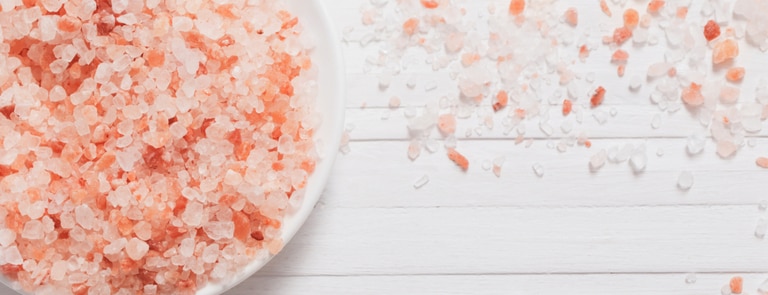Himalayan salt, with its captivating pink hues, has become a popular fixture in trendy kitchens and spas. But beyond its aesthetic appeal, does Himalayan salt offer any real health benefits? This exotic salt, mined in the foothills of the Himalayas, boasts a unique composition and is often touted for its superior qualities compared to common table salt. Let’s delve deeper and explore the science behind Himalayan salt, separating fact from fiction.
What is Himalayan Salt? A Geological Journey
Himalayan salt, also known as pink Himalayan salt, is a type of rock salt mined from the Punjab region of Pakistan. Geologists believe these salt deposits formed millions of years ago when an ancient sea evaporated, leaving behind layers of mineral-rich salt crystals. The unique pink color of Himalayan salt is attributed to trace minerals, primarily iron oxide.
Composition Comparison: Himalayan Salt vs. Table Salt
While Himalayan salt and table salt (sodium chloride) share the same basic chemical makeup, there are some key differences in their composition:
- Sodium Chloride Content: Himalayan salt contains about 98% sodium chloride, similar to table salt. However, the remaining 2% of Himalayan salt comprises various trace minerals, including iron, calcium, potassium, magnesium, and manganese, which are largely absent in refined table salt.
- Processing Methods: Himalayan salt is typically minimally processed, involving hand-mining and crushing the crystals. In contrast, table salt undergoes extensive processing, including refining and the addition of anti-caking agents and iodine (in iodized salt).

Health Claims Surrounding Himalayan Salt: Fact or Fiction?
Many health claims are associated with Himalayan salt, but how much scientific evidence supports them? Let’s explore some of the most common claims:
- Detoxification: Proponents claim Himalayan salt can help detoxify the body by drawing out toxins. However, there’s no scientific evidence to support this idea.
- Electrolyte Balance: While Himalayan salt does contain trace amounts of electrolytes like potassium, calcium, and magnesium, the quantities are minimal.
- Improved Hydration: Some believe Himalayan salt baths can improve hydration, but soaking in salt water can actually dehydrate you.
- Lower Blood Pressure: Limited research exists on the potential benefits of Himalayan salt for blood pressure regulation.
Himalayan Salt: A Culinary Consideration
While the health claims surrounding Himalayan salt might be exaggerated, it can still be a flavorful addition to your cooking. Here are some ways to incorporate Himalayan salt into your cooking:
- Finishing Salt: Use coarse Himalayan salt flakes as a finishing touch on steaks, grilled vegetables, or roasted potatoes.
- Baking and Brining: Himalayan salt can be used for baking and brining meats and poultry.
- Himalayan Salt Block for Grilling: Himalayan salt blocks can impart a subtle salty flavor to grilled meats and vegetables.
Safety Considerations with Himalayan Salt
Himalayan salt is generally safe for consumption, but it’s important to remember that it’s still salt. Here are some safety considerations:
- Moderation is Key: Practice moderation in salt consumption.
- Watch Out for Processed Foods: Be mindful of the sodium content in processed foods.
- Consult a Doctor if Needed: If you have any pre-existing health conditions, consult with your doctor before significantly increasing your salt intake.
The Bottom Line: Himalayan Salt – Enjoy, But Don’t Expect Miracles
Himalayan salt offers a unique pink hue and a slightly different flavor profile compared to table salt. While its health benefits might be overstated, it can still be enjoyed in moderation as part of a balanced diet.



